
If you have not read Part 1, please do so now, or some of this will not make sense to you.
I have mixed feelings about this statement. I do value the importance of copyright (unlike some people who feel that it only serves corporate interests and should be abolished). I have threatened to sue on three occasions and been compensated in all three instances. Two of those were clear and direct lifts of particular images, but one of them was merely a infringement of style, which my lawyer enumerated in 13 points. He expected that they would tell us to “fuck off back to Canada” (his exact words), but much to our surprise they paid up and destroyed remaining copies of the offending item.
We were surprised because “style” is not copyrightable in the US (where the infringement took place). Someone has to actually, demonstrably lift your image or unique part of your image for you to have a copyright infringement. But when they do it it makes me hopping mad.
There is a—sadly abandoned—Facebook group called “Copy/Anticopy” which I absolutely loved. In it they would post two or more images of design side-by-side and ask the question “Similarity, Copy or Not Copy?” And those few of us following would weigh in. The comparisons were fascinating. As I pointed out in some of the posts, other options to the question were “homage” and “parody.” Some were posters that used the same image—but that image might have been stock. I found the question endlessly fascinating. The group is still there, so take a look.
All this to say that unless your image has been specifically lifted and regurgitated (alterations and interpretations may or may not protect you: search “Shepard Fairey vs. Associated Press”), you are not protected by copyright—online outrage and accusations notwithstanding.
However, in tiny Canada:
Canadian copyright law takes its cue from a 2004 decision of the Supreme Court: CCH Canada Ltd. v. Law Society of Upper Canada. In it, the high court defined an "original work" in terms of effort — as a product of "an exercise of skill and judgment." That exercise of skill and judgment, wrote then Chief Justice Beverley McLachlin, "must not be so trivial that it could be characterized as a purely mechanical exercise."
— Source
Super interesting! However, from the same source:
But because Canada is a little fish in a big copyright pond, said Lebrun, many decisions about the legal status of generative AI may be settled abroad. "The principal problem facing any artist in this situation is jurisdiction," he said. "This isn't happening in Quebec. It's happening in California, mostly. This is an international issue. It's international data."
From time to time someone would contact me to say that so-and-so had copied my work. I’d take a look and see something ornamental and say, “I don’t own ornament.” Or maybe it would be something that showed some influence, but so what? I have been influenced by those who came before me—we all know that’s how it works.
So when we look at other people’s work are we stealing something from them? What if we search for pictures of horses to figure out just what that hind leg looks like from a certain angle? What if we search #hotrod and use what we find as references to make our own drawings of hotrods? Is any of that theft?
Because that’s what AI is doing. And in fact, because it’s looking at and learning from absolutely everything, your (yes your) influence on it is far less than on the person who specifically looks at your images for “inspiration,” or whatever.
Meanwhile, currently, images made with AI are not copyrightable. Copyright (in the US, anyway) applies only to images “made by humans.” I’m sure this will be challenged in the near future, but the law changes very slowly and technology moves very fast. But I’m fine with this; I think that’s fair for now until things get more sorted out. As mentioned in my previous post, I personally don’t feel authorship in the images I made, although I do feel ownership.
Turbulent waters
I’ve covered the basic usage of Midjourney, but it, and other AI image programs, have the ability to specifically request images “in the style of” an artist or photographer. Aside from the fact that style is not copyrightable, this does seem concerning—until you try it. I have tried it, and my dear designer/illustrator friends … it has no idea who you are. I have tried some of the most famous names in Illustration, and it doesn’t even give a hint of knowing who the fuck I’m after. As for myself? Oh, people have tried …

Again, it hasn’t got a clue. I’ve got maybe 500 images out there among billions. An artist has to have a massive level of fame (word-recognition by the masses) for this to affect them—if indeed it does. Below are a couple of experiments I made:

Both of these are astonishing. They really had me wondering how close they were to actual paintings (except the bottom two “Hockney”s) but via online searches I could find nothing with the same compositions, although plenty, in both cases, with similar elements. The AI is extremely good at representing paintings by incredibly famous artists within the subject matter that is common to their work, but I wondered how transferable that imitation was to a subject not associated with the artist.
It would appear it has no idea how David Hockney might paint a rabbit:

It’s an idiot! This is because it has no actual intelligence—it is riffing off of many thousands of artworks on the internet by those artists. But when presented with something they never made, it’s unable to apply any technique whatsoever to a new subject. It has no idea that Rockwell is associated with sweetness, innocence, and a particular era. So basic to a human, incomprehensible to it. And this aspect of understanding is not going to improve in the near future, possibly the distant future, or maybe never.
Nevertheless, an unscrupulous person might generate a Hockney (or Rockwell, Koons, Hirst …) similarities and put them on pillows or some shit and sell them. But the AI didn’t do that, the human did. That same human would think nothing of taking images from the internet and selling them on pillows. And guess what—here they are. AI won’t change bad behaviour by humans.
Things get murkier the deeper you go
I was disturbed, however, to discover that you can point Midjourney to an online image in the prompt to include it in the algorithm. I do actually think this should not be legal, despite the less-than-stellar results, because it shows intent to copy. That’s an important point and comes up in this legal case against Jeff Koons.
However, I wanted to test it out, so I used some of my own work on the internet to include in a prompt.
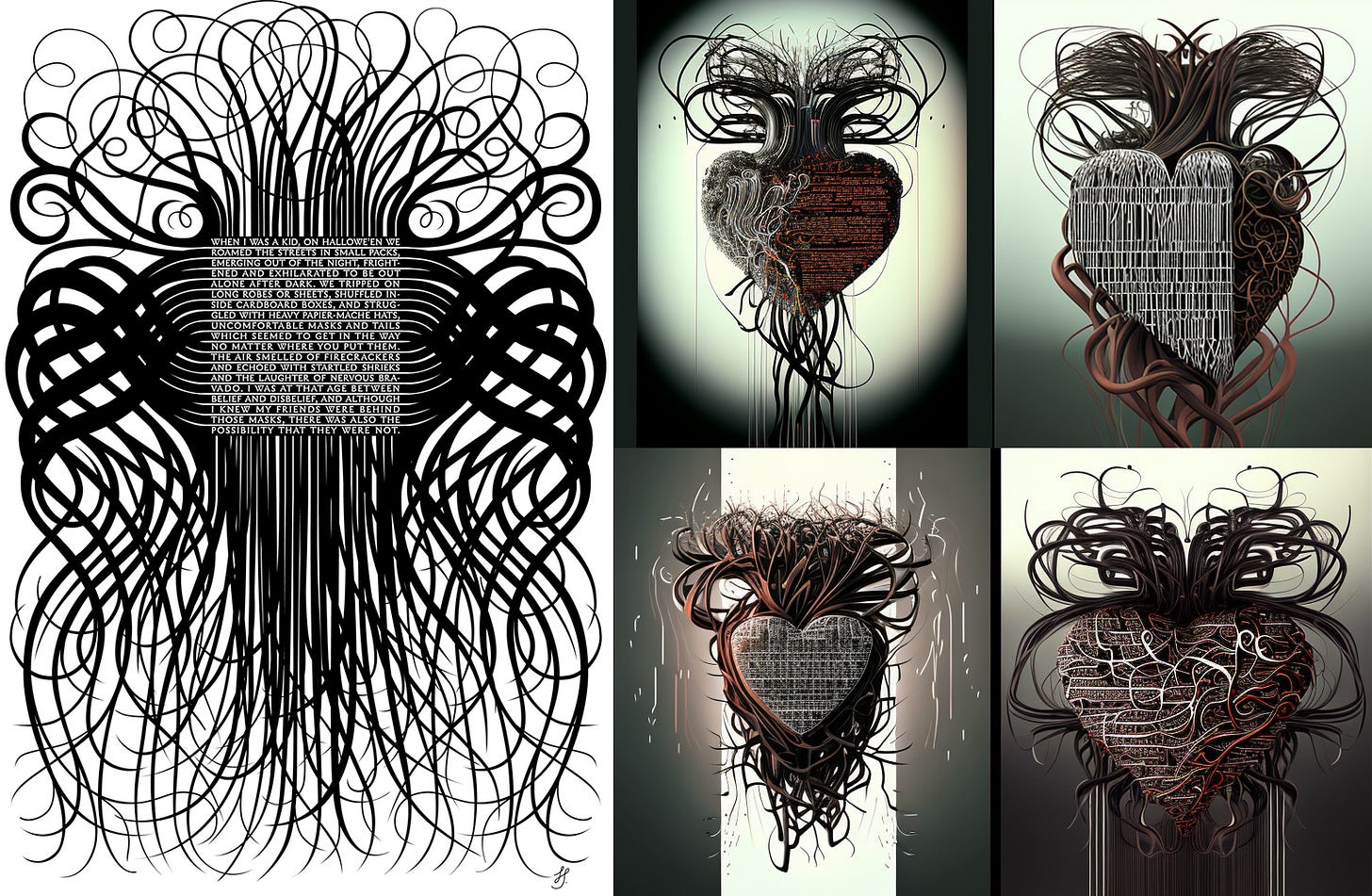

While the first two examples are vaguely me-ish in a way that I might recognize if I saw them in the wild, they are no more concerning than any human-created messes that I have seen based on or influenced by my work. As for the third example, there’s barely any relationship. Only the 2nd version might give me pause, but otherwise, have at ’er.
While I maintain that AI is not going to improve in “intelligence” any time soon, this type of copying directly from an image will improve, and that really is something worth fighting/lobbying against.
But aside from that I think Illustrators and artists have little to worry about on the copyright front, unless your work looks like this
In which case you should have been worried a long, long time ago, and not due to AI, but due to humans.
Meanwhile
If you’re seriously worried about your copyright, you might want to take a look at what you agree to when you use Facebook, Instagram or any number of other online platforms. Meta’s (FB, Insta) current policy is:
We do not claim ownership of your content, but you grant us a license to use it. Nothing is changing about your rights in your content. We do not claim ownership of your content that you post on or through the Service and you are free to share your content with anyone else, wherever you want. However, we need certain legal permissions from you (known as a “license”) to provide the Service. When you share, post, or upload content that is covered by intellectual property rights (like photos or videos) on or in connection with our Service, you hereby grant to us a non-exclusive, royalty-free, transferable, sub-licensable, worldwide license to host, use, distribute, modify, run, copy, publicly perform or display, translate, and create derivative works of your content (consistent with your privacy and application settings). This license will end when your content is deleted from our systems. You can delete content individually or all at once by deleting your account. [Emphasis mine.]
— Link
And you might want to think twice about complaining about it all on social media while using animated gifs from movies etc. to express your feelings.
But there’s still lots worry about
Will people use AI instead of artists? Yes, and they already have. Ad agency BSSP used AI generated images for the fall 2022 production of The Nutcracker for the San Francisco Ballet. And I’m sure there are many more.
I think a lot of artists’ work will be lost to AI. Not from the likes of The New Yorker, or anywhere that has intelligent (there’s that word again), sensitive Art Directors—but we all know that kind of work is few and far between. So while I honestly don’t believe that an AD who would otherwise use, say, Anita Kunz, will instead try to get an Anita-Kunz-like-image out of AI (good fucking luck!), the types of people who just need something that they would have previously got from stock imagery, or stolen from the internet, will. Plus unimaginative, shit ADs.
David Holz, the founder of Midjourney, says:
Right now, our professional users are using the platform for concepting. The hardest part of [a commercial art project] is often at the beginning, when the stakeholder doesn’t know what they want and has to see some ideas to react to.
Oh my god. The day will come soon, if it hasn’t already, when you—yes you—will be presented with some piece of half-baked “concept art” generated in AI with the instructions “like this, sortof, only happier, with more “pop”, and no warrior king, and you-know—in your style.” This guy shows us how horrible it will be.
Some of us have the luxury of telling such people to fuck off. Others don’t. Welcome to the 1990s of graphic design when young designers had to take “direction” from people who just learned how to use InDesign, and people with two months of night classes in design were “stealing our jobs.”
In the immortal words of Michael Bierut, “Do good work.”
David Holz, again, says:
I think that some people will try to cut artists out. They will try to make something similar at a lower cost, and I think they will fail in the market. I think the market will go towards higher quality, more creativity, and vastly more sophisticated, diverse and deep content. And the people who actually are able to use like the artists and use the tools to do that are the ones who are going to win.
I hope he’s right, and in certain areas AI cannot and never* will be able to compete. It will never be able to read a story, understand its nuances and come up with a compelling image for it (although it could “read” a story and pick out repeating words like “girl, house, mother” and make some cliche out of that); and it will never have humour or wit (Christoph Niemann can totes relax).
*In our lifetimes and, I bet, before the power grid goes down and we all have to live on nuts and berries.
But its use will impact you and other artists, and especially photographers, like stock photography and illustration did. I predict we will also see a big jump in the next year or two while everyone tries out the novelty of it.
But as someone who has used it obsessively over the past two weeks, I can tell you that it’s not as easy as people like to say it is, and I think ADs will tire of spending hours trying to get that “concept image” and revert to just telling you what they want.
Regarding Contests
So far, the Society of Illustrators New York, American Illustration, Communication Arts, Spectrum Fantastic Art, 3x3, Creative Quarterly, Society of Illustrators Los Angeles, World Illustration Awards, Applied Arts Awards and the AIGA have all stated that they will not allow AI images into their competitions, and for the moment, I support that, and think that’s fair.
I do believe, however, that AI like Midjourney, etc. are tools, and that creative people will find ways to use those tools in interesting and creative ways, and that these boundaries will become blurred.
For now, I believe that AI generated images should be clearly stated as such, wherever they are used, even if put in other photos or whatever. For the record, I also believe that digitally altered photos should also be stated as such. Much of the furor comes down to honesty. People should not claim work as their own that they did not make or that they stole from someone else, whatever the method, and such behaviour should not be tolerated.
If you want to understand more about AI, please read this article about the difference between AI and babies.
For more about US copyright and AI, you can watch/listen to this annoying video.
That article about Canadian law (“The Legal Status of Generative AI”) is super interesting, and is here.
Next, in Part 3, Edel Rodriguez and I will talk about all of this.




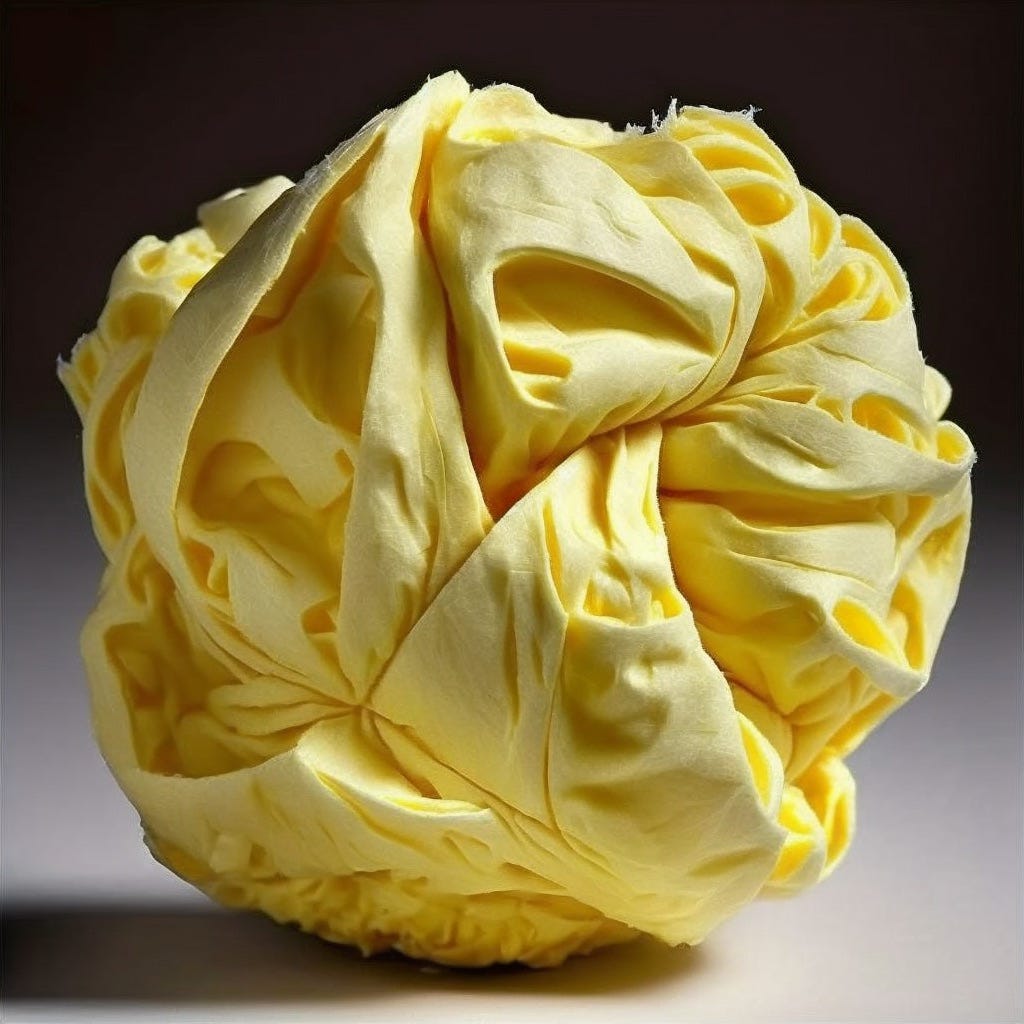

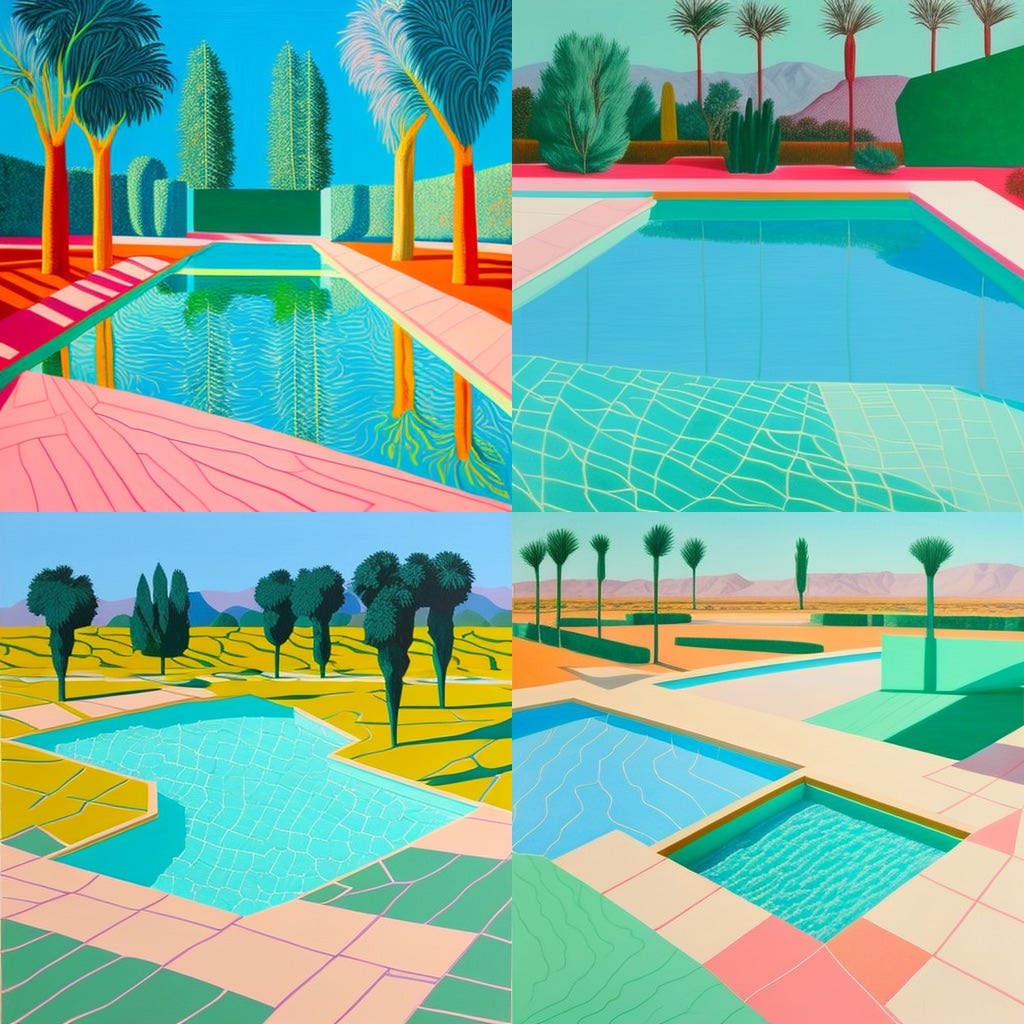



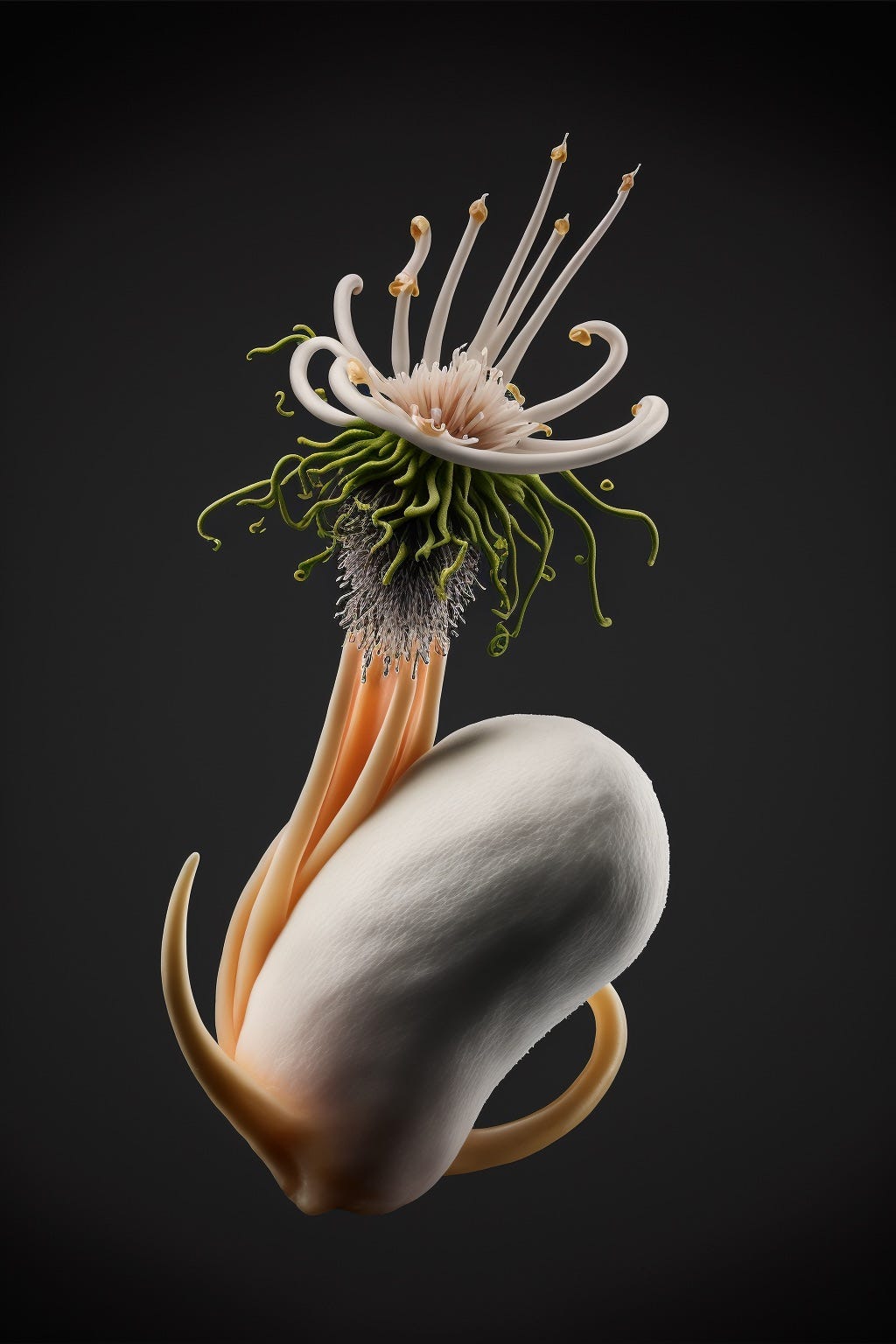
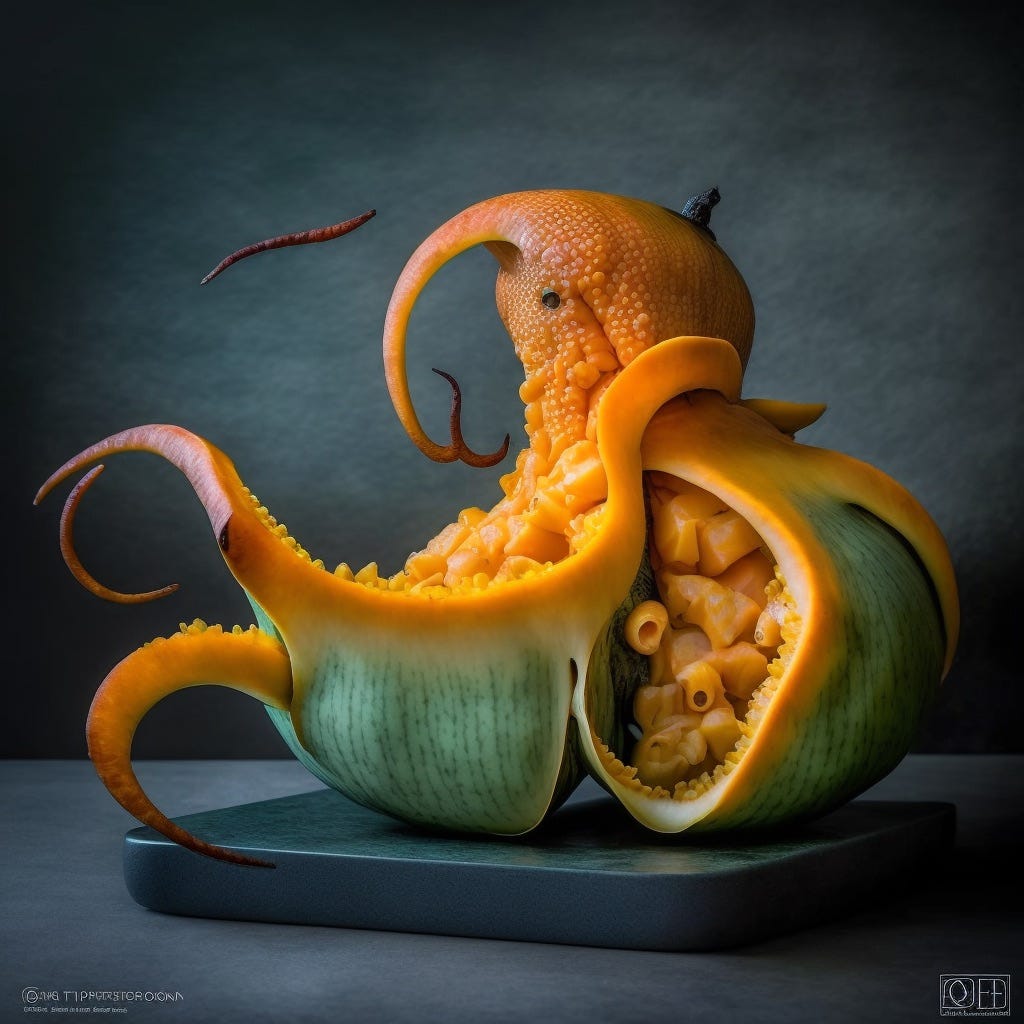
thanks for writing this!
Thanks for an entertaining yet important deep dive! I enjoyed reading both chapters and am looking forward to part 3.
Though I'm afraid that AI models are more capable of mimicking specific artists and their styles than it appears at first glance.
I think the Midjourney team might have intentionally "nerfed" this capability in V4. This is also mentioned in the "Midjourney: 6 months later" video you've linked to, around the 8:20 mark, and one can argue this is good news for artists who don't want to see their names used wholesale.
At the same time, models like Stable Diffusion do a better job at it to this day. Here's how SD did with your "Norman Rockwell" prompt: https://dreamlike.art/d/A5mlKgBPiABc (seems way closer than what Midjourney spit out).
Already back in September last year, I did an experiment to see how 5 famous artists would deal with unconventional subject matter they wouldn't have actually worked on:
https://www.whytryai.com/p/ai-art-experiment-5-artists-3-prompts
To my---granted, extremely untrained and amateur---eyes, Stable Diffusion does a pretty decent job of mimicking each artist's style quite convincingly.
Of course, I took some of the most well-known and the most "trained on" artists from this list: https://www.urania.ai/top-sd-artists. So you might be right that not every artist has something to fear in the immediate future.
But I wouldn't underestimate the potential of upcoming algorithms to better mimic any style convincingly with even less training data.
I think we should inevitably expect more regulation in this space.
I personally would like to see "opt in" / "opt out" options for artists who want to be excluded from training data, as well as some form of a profit-sharing model that allows participating artists to get royalties if AI images / videos / etc. based on their style are monetized.
Things are moving fast. Let's see how it all develops!